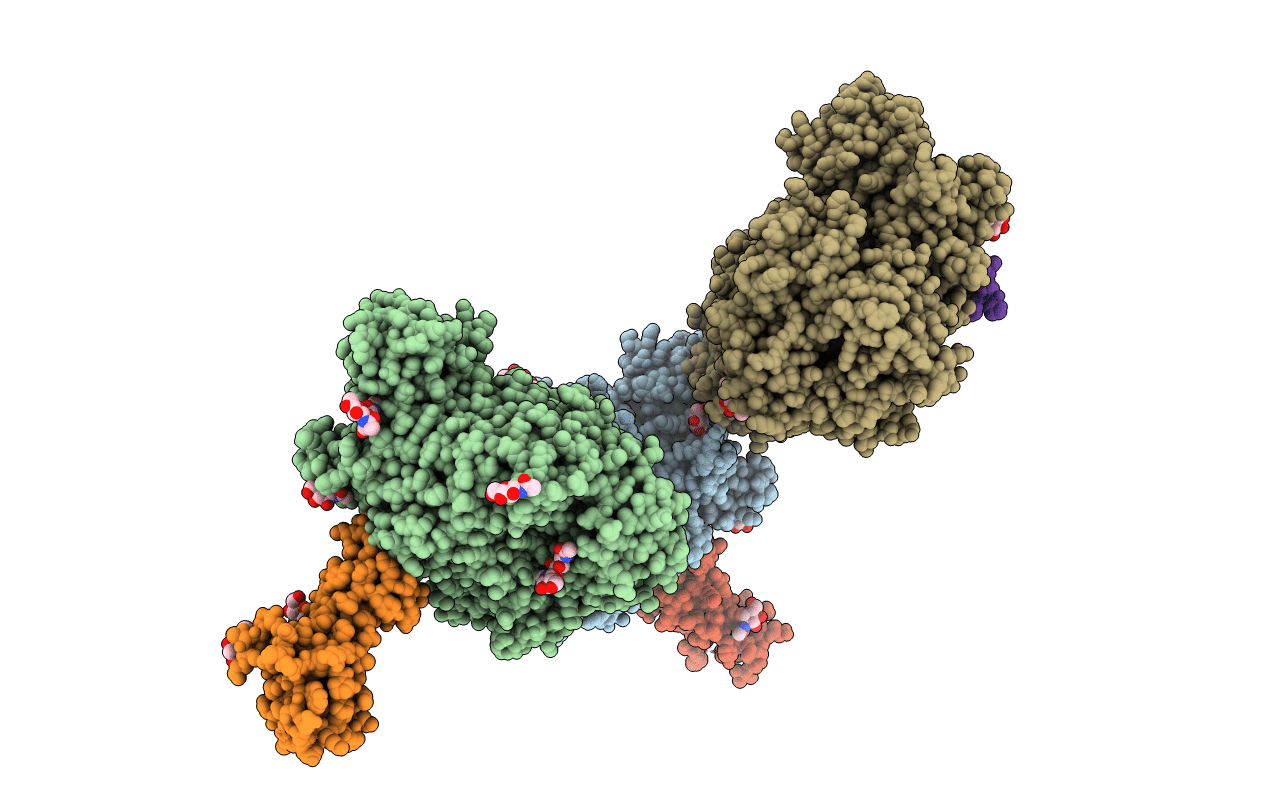
Deposition Date
2017-08-29
Release Date
2017-12-06
Last Version Date
2024-10-09
Entry Detail
PDB ID:
6ATK
Keywords:
Title:
Crystal structure of the human coronavirus 229E spike protein receptor binding domain in complex with human aminopeptidase N
Biological Source:
Source Organism:
Homo sapiens (Taxon ID: 9606)
Human coronavirus 229E (Taxon ID: 11137)
Human coronavirus 229E (Taxon ID: 11137)
Host Organism:
Method Details:
Experimental Method:
Resolution:
3.51 Å
R-Value Free:
0.26
R-Value Work:
0.24
R-Value Observed:
0.24
Space Group:
P 31 2 1


